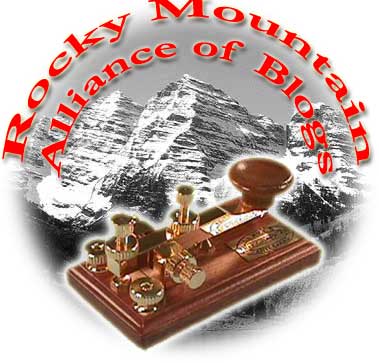Susan Barnes-Gelt is all about urban planning for democracy. Appropriate for the 125th anniversary of the birth of one of the most destructive architects of the 20th Century.
Lileks has done this better, but hey, as long as they keep trying, we'll have to keep batting them down.
For the past six years, George Hoover's advanced design studio/ seminar at the University of Colorado's School of Architecture has addressed the Colorado Station transit site at Interstate 25 and Colorado Boulevard. The graduate course includes readings from the Declaration of Independence, Aristotle, Benjamin Barber, Jurgen Habermas and, of course, Denver's Comp Plan 2000. Students develop master plans and specific designs for the transit site.
Well, I'm glad to see that Denver's Comp Plan 2000 is now on par with Aristotle. And judging by the pace of progress, by the time it's finished, it'll be as old as the Philosopher is now. Of course, a properly structured education would put Constitutional theory and Aristotle first, and then fill in the urban planning gaps with doses of William Whyte and Jane Jacobs. I mean, no, of course we wouldn't want to lock the poor, impressionable minds into outdated modes of thought. But my experience in b-school ethics is that to the extent that Aristotle is deep, he is ignored, and to the extent that he can be used, he's reduced to a sound bite. There's no framework for analyzing him, much less applying his thought, which is worse than useless.
This year's class was extraordinary. Students understood the delicate balance of the individual and community and embraced obligations of every stakeholder, beginning with the architect.
Well, just go ahead and capitalize "Architect" for crying out loud. The architect is only a stakeholder insofar as the success or failure of selling the project determines his future commissions. The architect is a chicken, the people living there are pigs
This group of young professionals considered the elements of a livable city in the context of what they consider the most pressing question of the 21st century: global sustainability.
Pause for a moment of silence for Global Sustainability. Good Lord, we pollute less per capita, use less per dollar of GDP, have fewer children (aside from the cultural suicidal Europe) than the rest of the world. We do this because we've actually advanced past the stage of subsistence living to the point where we can actually worry about cleaning up our messes. So maybe, if Global Sustainability is the issue, we should put the stick to every thieving third-world kleptocratic maniac to stop stealing from their own people long enough to let them develop institutions that are capable of maintaining the water treatment plant after we leave.
They explored how personal, social, political and religious fragmentation and conflict might be overcome in a new, sustainable paradigm that respects and even celebrates differences.
Personal fragmentation can be solved by wearing a helmet and not sticking your foot under a running lawnmower. "Religious fragmentation" is a proper contraction of "Religious figment-of-imagination." I live in the most heavily-Jewish district in the state, and it's barely 10%. I wasn't aware that Catholics and Presbyterians were busily self-segregating. Or by politics, for that matter. As for social fragmentation, this could mean either race or class, but by God, if those rich people are bound and determined to spend their money on more comfortable surroundings, they should be stopped, even if it means piping the neighbors' musical selections in through the air vents.
...All of these elements contribute to the armature of a high-population-density, transit-oriented Denver community. Their urban village becomes a test bed for change, a concept that philosopher Michel Foucault terms "heterotopia."
I can't tell you how happy I am that I don't have the faintest idea what this means.
Foucault uses heterotopia to describe places and spaces that function in non-hegemonic conditions — a campus, prison or hospital where architecture might facilitate the creation of more open and equitable systems.
"In the cells, the prisoners come and go, talking of Michel Foucault." I'm sure just what we need is a more egalitarian prison system. Campuses are already run by the inmates. And at my first (and hopefully last) hospital stay, the staff and doctors were so deferential I was concerned they weren't doing their jobs. You know something, there are places that have hierarchies for a reason.
It wasn't surprising that among these 16 graduate students, one was an organic farmer and another expressed the master plan as a perfectly organized quilt. The group designed living units as small as 140 square feet; beautifully organized and conceived small and large public gathering spots; green pathways; and areas of solitude that juxtaposed perfectly with the high-intensity hardscape of the development.
If Ms.Barnes-Gelt is happy being thought of as organic corn or a little quilted square of fabric, well then, less power to her. The large public gathering spots will be perfect for hearing the message from The Farmer, or The Quilter. And I find it hard to believe that the "areas of solitude" won't be overrun with solitude-seekers if the place is such a high-density area, with solitude available only through the technological bliss of noise-canceling-headphone-laden iPods, in which case why not crawl back into your apartment closet for solitude, which is the real reason for having single-family homes in the first place?
Consistent with their roles as citizens, they designed places where democracy might flourish.
Apparently, democracy only flourishes when we're all stacked up like ants in some 1930s John Cheever apartment building. Soul-crushing conformity is what flourishes in this logical extension of the HOA That Ate My Self. Remember that these ideas come from the same people who think that high-density living alleviates congestion, and will tax that congestion into the suburbs, in order to prove it.
Urban planners have brought us every major step in the destruction of our cities from 1930 onwards. It goes back at least as far as this and this and this. (Try crossing the street in any of them.) Which means they've been trying for at least 70 years to get us to live tidily, and for some reason we refuse to cooperates. Some people never learn.





































